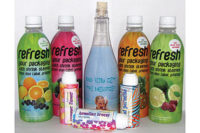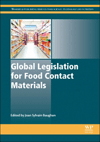FDA's changes to food labels, portion sizes could cause issues for dairy processors

In today’s episode of “As The Dairy Churns,” we go back 50 years as Mom serves her family whole milk and puts the butter dish on the table at every meal. We see Mom turn gray and her children grow into adults. This next generation learns that fat is bad and shops instead for nonfat or low-fat versions of their favorite foods. Now the world turns to the present day, and researchers have concluded that saturated fat in dairy foods and beverages might have a prophylactic effect on heart health. Mom’s granddaughter, now a mother herself, sets the butter dish on the dinner table, and so the dairy churns.
As dairy science has evolved, so have recommendations about what constitutes a healthy diet. Attitudes about salt, sugar, vitamins, protein and portion sizes have changed. Enter the U.S. Food and Drug Administration, which is revising its rules for food labeling, including nutrition facts and serving sizes.
The FDA’s proposals ignore the world in which dairy processors live. Their industry is a highly regulated one. According to the International Dairy Foods Association, about one-third of all FDA food standards are for dairy products. Standards of identity restrict how these foods are manufactured and what they can be called. Dairy-milk processors are limited by what they can add and still market their beverages as milk. They have to use “dairy drink” or a similar term when they add certain ingredients to milk. On the other hand, there is no standard of identity for plant-based beverages. Makers of almond milk can add ingredients and still call their drinks “milk.”
IDFA is the Washington, D.C.-based trade group whose members produce 85% of the milk, cheese, ice cream, cultured products and frozen desserts sold in the United States. On July 31, the group filed 21 pages of comments to FDA’s 107-page proposal about nutrition facts, Docket No. FDA-2012-N-1210. IDFA submitted a separate 13-page letter to FDA’s 39-page proposal about serving sizes. The letters are signed by Connie Tipton, IDFA president and CEO, and Cary Frye, vice president of regulatory and scientific affairs. (See all these documents at dairyfoods.com.)
I have room here to review just some of the issues. The FDA calls vitamin D and potassium “nutrients of concern.” That means Americans are not getting the recommended minimum daily levels of these nutrients. Thus, FDA wants to increase the Daily Value for vitamin D and that could harm milk’s reputation. As IDFA points out, “the levels of vitamin D that may be added to dairy products are strictly regulated through the requirements of product standards of identity and food additive and GRAS regulations.” (GRAS is a designation meaning “generally regarded as safe.”) If the milk industry can’t increase the level of vitamin D fortification, the percent DV will decrease, even though no change has been made to the product. Under FDA’s proposal, milk would be knocked out as an “excellent” source of vitamin D.
What’s in a name, sugar?
And that brings us to sugar, the misunderstood poster child of America’s obesity epidemic. FDA wants food makers to declare added sugars. IDFA (and other food industry groups) argue that labeling sugar is much more complex than performing a calculation. Labeling won’t be helpful to consumers, IDFA states, and writes that “there is no scientific support for distinguishing between ‘added sugar’ and ‘naturally occurring’ sugars.”
IDFA even cites FDA’s words: “added sugars do not contribute to weight gain more than any other source of calories.” But here’s where FDA’s proposal really hits dairy processors: “the label could endanger the confidentiality of product formulations.” This level of detail “could compromise legitimate trade secrets,” IDFA concludes.
Processors using lactose would be required to declare the sugars contributed by lactose-containing ingredients. Lactose isn’t used as a sweetener and it is only 20% as sweet as sucrose, IDFA points out. The National Milk Producers Federation, Arlington, Va., also wants the FDA to re-write its definition of added sugars. Under FDA’s proposal, the lactose in a tablespoon of nonfat dry milk incorporated into another food would count as an “added sugar,” while the lactose in a glass of milk would not, NMPF said. “Surely, that can’t be what FDA intends,” an NMPF vice president said.
A RACC and a hard place
The FDA wants to add a second column to packages containing multiple servings. For example, a pint of ice cream would have one column showing per-serving amounts and a second column showing container amounts. By the way, the FDA also proposes doubling the RACC to one cup. (RACC means “reference amount customarily consumed.”) IDFA objects for several reasons.
All of these proposals are just that – proposals. IDFA told me it does not know how quickly FDA will act and issue a final rule. The trade group does request a four-year waiting period to phase in any rule.
IDFA is looking out for dairy processors’ interests. If your company isn’t a member, you will still reap the benefits. But you’ll gain a lot more by joining the association. Think about that proposal.
Looking for a reprint of this article?
From high-res PDFs to custom plaques, order your copy today!








